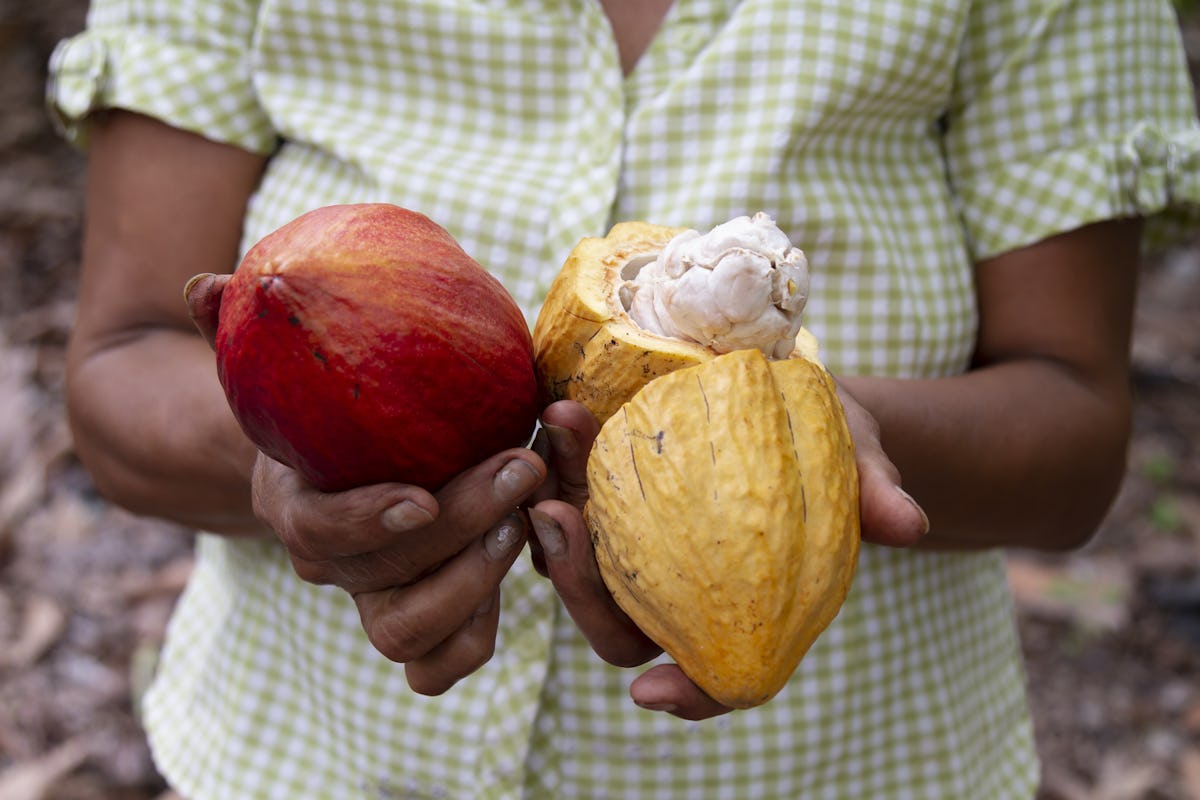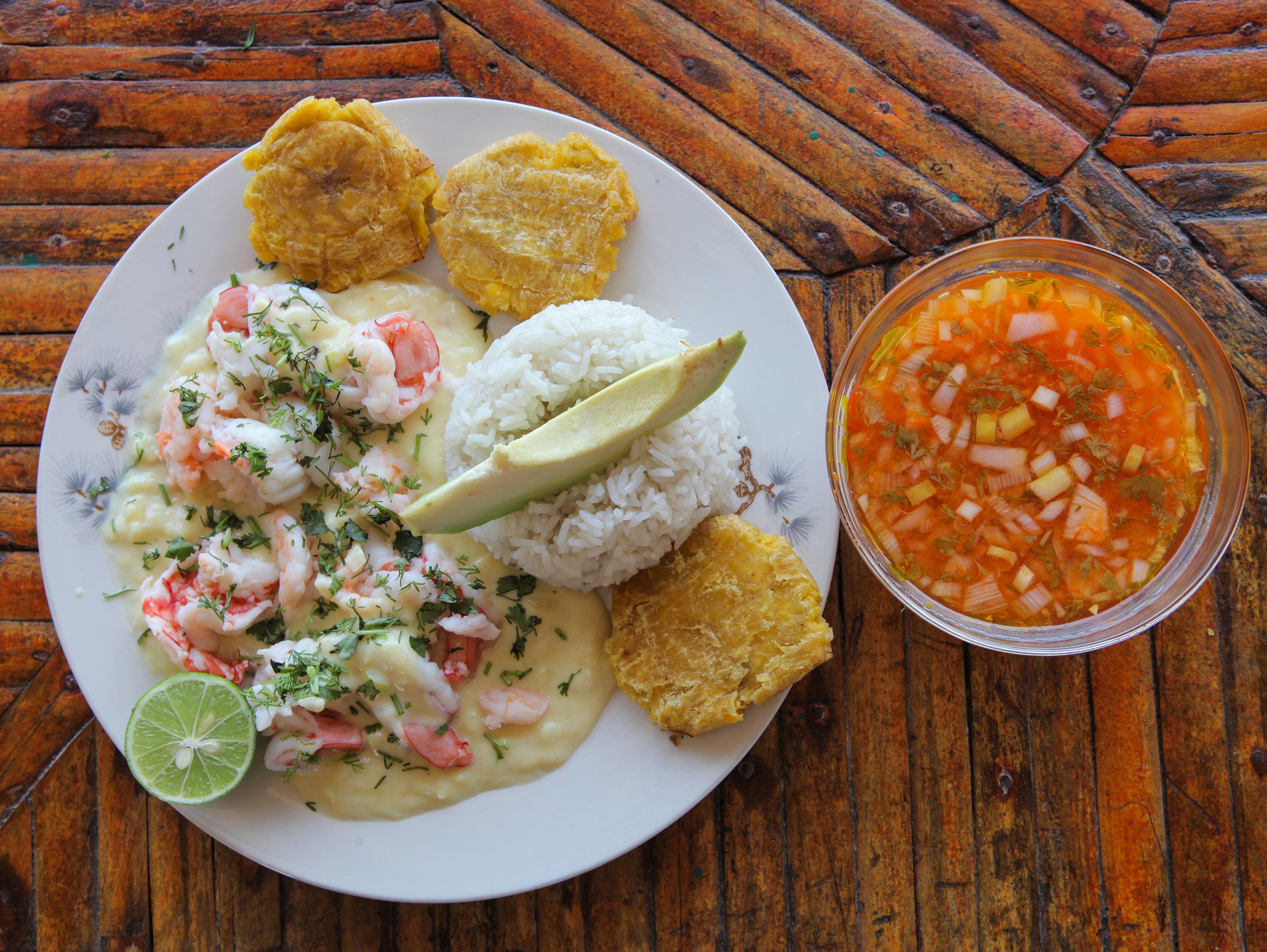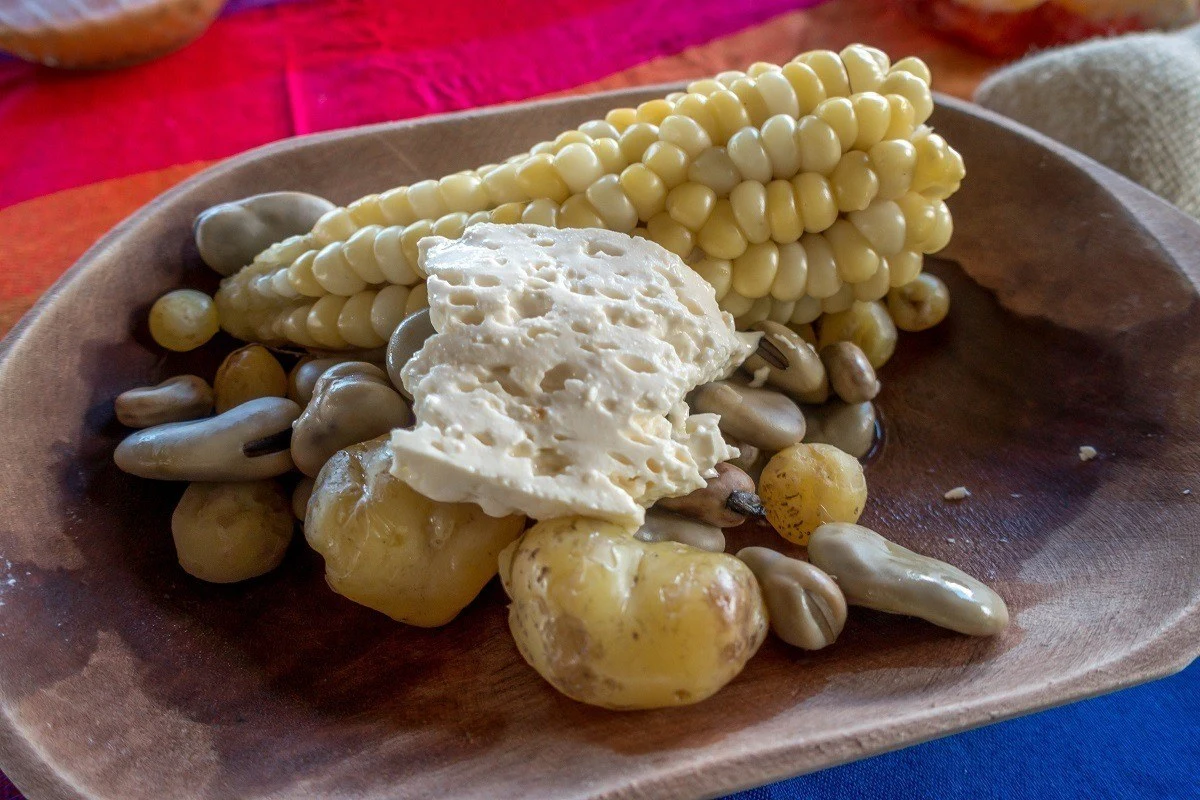Tasting Ecuador: A Foodie's Guide to the Most Delectable Dishes and Beverages
Introduction
Overview of Ecuadorian Cuisine
Ecuadorian cuisine is as diverse and colourful as the country itself, reflecting a rich tapestry of historical influences, local ingredients, and cultural traditions. Nestled between the Pacific Ocean and the Andes mountains, Ecuador offers a unique culinary experience that varies from the coastal regions to the highlands. It is a gastronomic adventure where traditional recipes have been handed down through generations, each telling a story of its origin.
You might notice that Ecuadorian meals often showcase a variety of ingredients, including potatoes, corn, rice, and fresh seafood. Culinary staples, such as corn and potatoes, are celebrated across the country, with different varieties found in different regions. The lush landscapes and microclimates provide an abundance of local produce, leading to vibrant dishes that tantalise the taste buds. Some quintessential Ecuadorian dishes include:
- Ceviche: A dish made with fresh seafood marinated in citrus juices and spices.
- Llapingachos: Potato patties that are crisp on the outside and soft in the middle.
- Fanesca: A hearty soup traditionally served during Holy Week, featuring grains and vegetables.
Culinary Influences in Ecuador
The remarkable fusion of flavours in Ecuadorian cuisine can be traced back to several culinary influences that have shaped its character over the years. As you explore these influences, you will find that each adds a distinctive touch to the national palate.
- Indigenous Roots:
- Indigenous tribes like the Quechua and Shuar laid the foundation for many traditional recipes. They cultivated crops such as quinoa, which remain a vital part of the Ecuadorian diet today.
- Spanish Colonisation:
- The arrival of Spanish colonisers introduced new ingredients such as pork, chicken, and various spices. This blend of indigenous and Spanish culinary practices created a vibrant fusion reflected in many dishes, particularly in those from the highlands.
- African Heritage:
- With the arrival of African slaves in the coastal regions, cooking methods and ingredients such as yuca and plantains were incorporated into the local cuisine. This influence is particularly evident in street foods like 'chifles', crispy plantain chips that are a beloved snack.
- Chinese Immigration:
- The influx of Chinese immigrants in the 19th century resulted in the popularization of dishes like arroz con pollo, which has become a staple in many Ecuadorian households.
These influences have not only shaped the flavour profile of Ecuadorian cuisine but also contributed to the unique dining culture that embraces communal meals and festive gatherings. Whether it’s a family reunion or a casual get-together with friends, food plays an integral role in Ecuadorian social life, inviting everyone to share a meal and foster connections.
Ecuadorian cuisine showcases a dynamic blend of flavours and culinary techniques that create dishes you’ll truly want to experience. So, as you prepare to delve deeper into these mouth-watering delights, get ready to embark on a gastronomical journey like no other!

Traditional Ecuadorian Dishes
Ceviche: A Seafood Delicacy
One of the hallmark dishes of Ecuadorian cuisine is ceviche, a refreshing seafood delicacy that reflects the country’s diverse coastal culture. This dish has become so synonymous with Ecuador that sampling it is often considered a rite of passage for visitors.
Ceviche is typically made with fresh fish or shrimp, which are marinated in lime juice along with a medley of spices, herbs, and vegetables. The acidity of the lime juice “cooks” the seafood, resulting in tender morsels bursting with flavour. Here’s what you may find in a traditional Ecuadorian ceviche:
- Main Ingredient: Fresh seafood like shrimp, fish, or mixed seafood.
- Acid/Base: Lime juice which provides that zesty kick.
- Vegetables: Chopped onions, tomatoes, and cilantro for freshness.
- Spiciness: Often includes aji, a local hot pepper, for that extra punch.
Some ceviche variations also come with a side of popcorn or fried plantains, known as "chifles," adding a delightful crunch that complements the dish beautifully. Did you know that you can find ceviche variations in different regions of Ecuador?
In the coastal areas, the seafood is typically prepared as a wet ceviche, served with a delightful broth. Meanwhile, in the highlands, you'll often find a dry version known as "ceviche de chochos," made with a type of local legume instead of fish. This dish is more than just a meal; it’s a celebration of fresh ingredients and local traditions.
Llapingachos: Delicious Potato Patties
Moving from the coast to the highland regions, we encounter another beloved traditional dish: llapingachos. These golden-brown potato patties are a true comfort food that showcases Ecuador’s abundant potatoes.
Llapingachos are made from boiled potatoes mixed with cheese, formed into patties, and then fried until they boast a crispy exterior. Enjoying a plate of these delicious potato patties is a treat that warms the heart. Here's what makes llapingachos so special:
- Base Ingredient: Potatoes, often a specific variety native to the region.
- Cheese: Mozzarella or a similar cheese is commonly added for creaminess.
- Seasoning: Spices and herbs like cumin and parsley infuse the mixture with flavour.
Typically served with a variety of accompaniments, there’s a custom to pair these patties with:
- Avocado: Sliced ripe avocado adds richness.
- Side Salad: Fresh greens provide a refreshing contrast.
- Salsa: A zesty salsa enhances the flavour profile.
Llapingachos are often enjoyed for breakfast, as a snack, or even as a side dish, making them incredibly versatile. It’s hard not to smile when you see a plate of these crispy delights coming your way!
Whether you find yourself devouring ceviche by the coast or indulging in llapingachos in the mountains, these traditional Ecuadorian dishes offer a taste of the country’s rich culinary heritage. Next time you sit down for a meal, consider exploring the unique flavours that have been embraced by Ecuadorians for generations!

Exotic Fruits and Snacks
Taxo: Tropical Fruit with Unique Flavor
As you delve deeper into Ecuadorian cuisine, you cannot overlook the vibrant and exotic fruits that grace the nation’s landscape. One such gem is taxo, also known as “passion fruit.” With its strikingly unique aroma and slightly sweet yet tangy flavour, taxo is a favourite among locals and visitors alike. Taxo’s exterior is a tough, wrinkled skin, usually in shades of yellow or purple, but it is the juicy interior that truly captivates the palate.
Inside, the fruit is filled with black seeds encased in a succulent yellow pulp. This pulp is where the magic happens—its taste is a harmonious blend of sweetness and acidity that can brighten up even the dullest day! Here’s why taxo stands out:
- Versatile Usage: Taxo can be eaten fresh, blended into smoothies, or used to make juices and desserts.
- Culinary Pairings: It pairs beautifully with yogurt or as a topping on cakes.
- Health Benefits: Packed with vitamins A and C, as well as dietary fibre, it serves as a healthful treat enjoyed fresh or as part of a dish.
When you visit Ecuador, keep an eye out for this exotic fruit in local markets. Street vendors often sell freshly made taxo juice, a popular thirst quencher that is both refreshing and delicious!
Chifles: Crispy Plantain Chips
Now that your taste buds are tingling from the exotic sweetness of taxo, let’s shift gears to another beloved Ecuadorian snack: chifles. These crispy plantain chips are a staple in Ecuadorian street food culture and a perfect accompaniment to many meals. Chifles are made from green plantains, which are sliced thinly and fried until they are golden and crunchy. What makes them stand out is their satisfying crunch and rich flavour, making them impossible to resist. Here’s what you need to know about chifles:
- Preparation: The slices are often double-fried to achieve that ultimate crispiness.
- Flavours: You can find them seasoned in various ways, from simple salt to tantalising spices or even sprinkled with lime juice.
- Versatile Snack: Chifles can be enjoyed on their own or served with ceviche, salsa, or guacamole for an extra kick.
You might find chifles served in many settings, from roadside stands to fancy restaurants, and they’re often the go-to snack for both locals and tourists. Imagine enjoying a bag of freshly fried chifles while strolling through an Ecuadorian market; it’s an experience that combines the vibrant sights and sounds of the local environment with tantalising flavours.
Ecuador's exotic fruits like taxo and delightful snacks such as chifles are just a glimpse into the culinary wonders that await you in this beautiful country. These treats embody the spirit of Ecuadorian food culture—fresh, bold, and brimming with passion. So, when you have the chance, don’t hesitate to embrace these flavours and enjoy the incredible journey that awaits your taste buds!

Popular Beverages in Ecuador
Canelazo: Warming Spiced Drink
When it comes to beverages in Ecuador, canelazo stands out as a beloved traditional drink that warms both the body and soul. Particularly popular in the highland regions, this spiced cinnamon drink is often enjoyed during chilly evenings, making it a perfect companion for social gatherings and festive occasions.
Canelazo is typically made by simmering water with cinnamon sticks, sugar, and aguardiente, which is a potent sugarcane spirit. The result is a fragrant and comforting drink that packs a bit of a punch! The sweetness of the sugar balances beautifully with the spiciness of the cinnamon, creating a unique flavour profile that's both festive and invigorating. Here are some key features of canelazo:
- Chilly Evenings: This drink is often served warm, making it ideal for those colder nights in the Andes.
- Social Beverage: It’s a common sight at street fairs, 'fiestas', and family gatherings, encouraging lively conversations and camaraderie.
- Variations: In different regions, you may find variations that include other spices or fruits, such as cloves or orange zest, adding a personal touch to the recipe.
Imagine enjoying a cup of canelazo while surrounded by friends and family after a day of exploring the stunning highlands. The warm spices and rich flavours create a sense of community and connection that truly embodies the spirit of Ecuador.
Guanabana Juice: Refreshing Tropical Delight
Shifting from warm to refreshing, let's talk about another favourite beverage in Ecuador: guanabana juice. Known as soursop in English, guanabana is a tropical fruit that boasts an unmistakably creamy consistency and a unique blend of sweet and tart flavours. This drink is a hallmark of the coastal regions and is celebrated for its refreshing qualities, especially on a hot day.
To prepare guanabana juice, the fruit is peeled, deseeded, and blended with water and sugar to create a smooth, silky drink that’s oftentimes served chilled. The texture is reminiscent of a milkshake, while the taste is like a delightful balance of strawberry, pineapple, and citrus—truly a tropical paradise in a glass! Here are some highlights of guanabana juice:
- Nutritional Value: Guanabana is not only delicious but also packed with vitamins C, B, and antioxidants, making it a healthful option.
- Culinary Uses: Besides juice, guanabana can be found in smoothies, desserts, and even ice cream, showcasing its versatility.
- Cultural Significance: Enjoying guanabana juice is an integral part of the culinary landscape in coastal Ecuador, reflecting the country's rich agricultural heritage.
Picture yourself on a sunlit patio, sipping creamy guanabana juice as you indulge in the lively atmosphere of a coastal town. The refreshing tropical taste offers a perfect respite from the heat, evoking a sense of bliss that is truly unforgettable. Whether you’re warming up with canelazo or cooling down with guanabana juice, these popular beverages perfectly capture the essence of Ecuadorian culture.
Each sip is a delightful exploration of flavours and traditions that connects you to the heart of Ecuador. So why not indulge in these exquisite drinks on your culinary journey? Enjoy the taste of Ecuador as each beverage transports you to vibrant locales filled with local charm!

Must-Try Street Food
Empanadas: Savory Hand Pies
When your culinary journey takes you to the vibrant streets of Ecuador, one of the must-try street foods is undoubtedly the empanada. These delightful hand pies come stuffed with a variety of fillings, offering a satisfying bite whether you’re strolling through a bustling market or enjoying a late-night snack.
Empanadas in Ecuador can vary greatly depending on the region and the type of filling. The dough is typically made from wheat flour, giving it a buttery, flaky texture that pairs perfectly with the savory fillings inside. Here are some popular fillings you might encounter:
- Cheese: A classic choice, perfect for cheese lovers.
- Meat: Ground beef or chicken, often with spices and vegetables.
- Vegetarian: Potatoes, mushrooms, and local cheeses are common for a meat-free option.
The empanadas are usually either baked or fried until golden brown, and they’re often served with a side of spicy ají sauce for dipping, adding another layer of flavour. Imagine biting into a warm empanada, the flaky crust yielding to the delicious filling, as the spicy sauce tickles your taste buds. The aroma wafts through the air, and you find it hard to stop at just one!
Empanadas are not just a filling snack; they are a delightful component of Ecuadorian social life, often enjoyed during gatherings or festivals. You’ll find numerous stalls offering freshly made empanadas, making them an accessible and mouth-watering treat anywhere you go.
Salchipapas: Tasty Sausage and French Fries Dish
As you continue your street food adventure, another unbeatable option is salchipapas—a beloved comfort food that embodies the essence of Ecuador’s culinary creativity. This dish is a simple yet fulfilling concept: a heaping plate of crispy French fries topped with sliced sausages and complemented by a variety of toppings and sauces. The base of salchipapas is typically:
- French Fries: Golden, crispy, and perfectly salted.
- Sausages: Usually made from beef or a mix of meats, sliced into bite-sized pieces.
But the fun doesn’t stop there! Salchipapas are often embellished with an array of delicious add-ons, such as:
- Sauces: Aji (spicy sauce), mayonnaise, ketchup, or even a drizzle of mustard add a nice zing.
- Fresh Ingredients: Chopped onions, avocado, or even cheese can elevate the dish further.
Whether you're grabbing a quick bite after a night out or indulging during a lazy afternoon, salchipapas offer an explosion of flavours and textures, enticing both locals and visitors alike. Picture yourself at a crowded street fair, enjoying a steaming plate of salchipapas while chatting with friends. The combination of crispy fries, juicy sausage, and zesty sauces creates a comfort food experience that brings smiles all around!
As you navigate through the urban landscapes of Ecuador, the street food scene is bursting with delights like empanadas and salchipapas. Each bite is a representation of Ecuadorian spirit and flavour, bringing people together and creating lasting memories.
So, don’t miss out on these culinary treasures; they are essential to your gastronomic exploration of Ecuador! Enjoy the delightful taste of these street foods as you dive into the heart of Ecuador’s rich and vibrant culinary culture!
